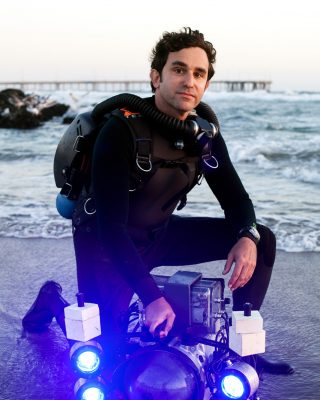Ninety three million miles away from earth resides our beautiful star. It showers our planet with electromagnetic radiation of different energies. The peak of this energy that makes it through space and our atmosphere is around 400-700 billions of a meter. This little sliver forms our visual spectrum – the rainbow of colors we perceive. This is also the same range that powers plant photosynthesis and the visual range of many land animals. But, descending down under the ocean, the seawater absorbs the red’s rapidly and then the other colors, until we are just left with blue. Hence, our BLUE ocean.
The planet is more than 7/10th covered in ocean and this blue light can penetrate down ~700 meters and still be visually perceived by some creatures. Below 700 meters ocean life is enshrouded in 24 hour/day darkness and the only photons they receive (except if they are on a steaming vent) are from bioluminescent life forms – animals like fireflies that can make their own light. But, take a second to think of life in the upper 700 meters of the blue ocean. Life in this massive area is primarily a blue world. Imagine living in a world where the only color is blue!
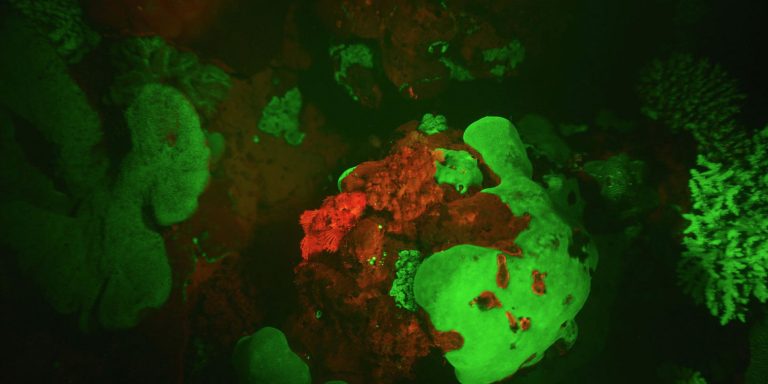
Enter the world of biofluorescence. Our research team has been finding that many forms of marine life in the upper ocean has the capability of absorbing blue light and transforming it into other colors. They turn blue into other colors via the process of fluorescence. This had been known for shallow corals for many years. But in 2014, my research team found it in over 180 species of fish and sharks. This has since extended to many more species and then, in 2015, we found it in marine turtles as well. The biofluorescent plot has thickened!
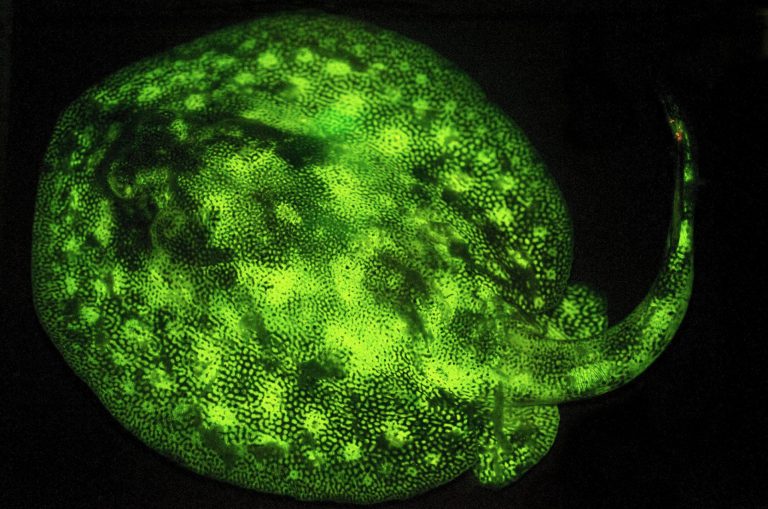
Lights, Camera, Action
For this Schmidt Ocean Institute Phoenix Islands expedition, we have designed a special set of deep blue lights that emit the same color spectrum as exists in the ocean (~450-500nm) and also designed a HD camera with a special filter that only allows longer wavelengths than 500nm reach the camera’s sensor. So the camera does not record the blue lights, but only the greens, oranges and reds that are being transformed by marine animals or minerals.

New Discoveries, New Questions
What is exciting about this test is that it is not yet known how deep biofluorescence extends. Does it go deeper than 700 meters where there is no sunlight left? The R/V Falkor’s Remotely Operated Vehicle SuBastian can reach inky dark depths of 4500, way below the photic zone, and is the perfect testing robot. So far on this expedition, we have been finding few examples of biofluorescence below 700 meters. This is interesting as it does hint biofluorescence is playing some sort of visual function in the blue ocean. As the last photons of sunlight in the deep ocean disappear, so does the biological fluorescence.
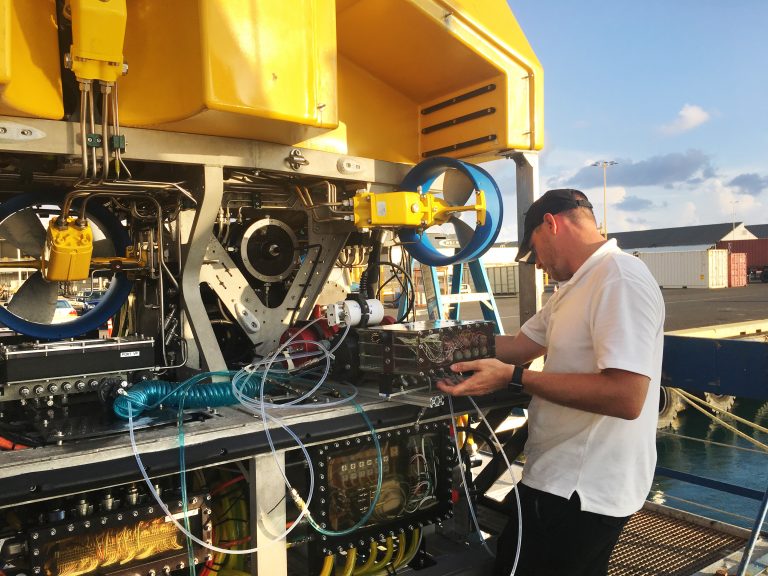
Sometimes, in science it is not what one finds that is interesting, but what one does not find! Thanks for riding along in this quest for better understanding marine biofluorescence. A next step will be to look deeply at the deep samples collected using advanced spectrographic instruments to confirm if biofluorescence is indeed primarily a shallow(er) blue ocean feature.
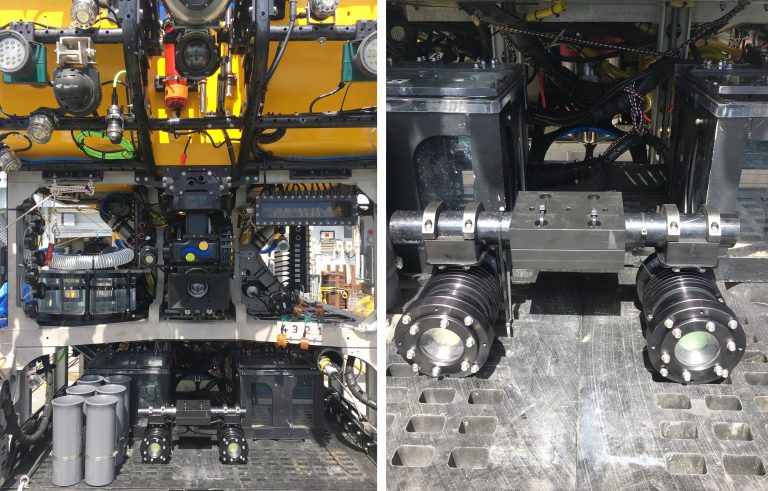
More information:
www.luminescentlabs.org
www.TED.com
